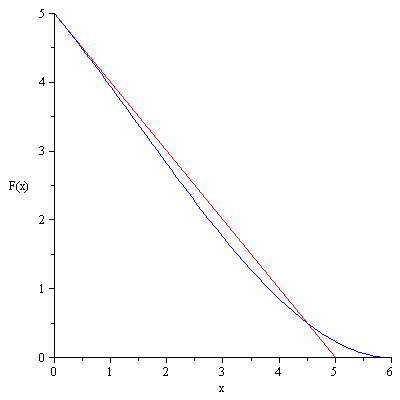I am investigating the effect of varying the height of which a ball is rolled down a slope on the range of the projectile (see image attached for experiment set up). I am getting really stuck on determining the mathematical relationship between horizontal range of the projectile and the height the slope (assuming conservation of energy).
This is the set up of of my experiment. Am I supposed to assume that the projectile leaves the table at an angle? According to my data, there is a linear relationship between h and x (which I don't think is true, except I can't figure out what it is actually supposed to be).
Can anyone offer some help here?
EDIT: Sorry the picture is slightly wrong ( I took it from the internet). I have done a quick sketch of what it actually looks like. Sorry for the poor quality!



